
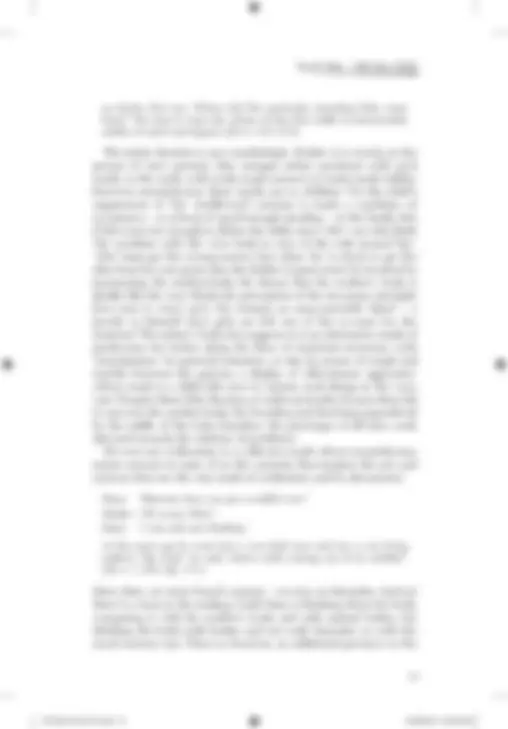
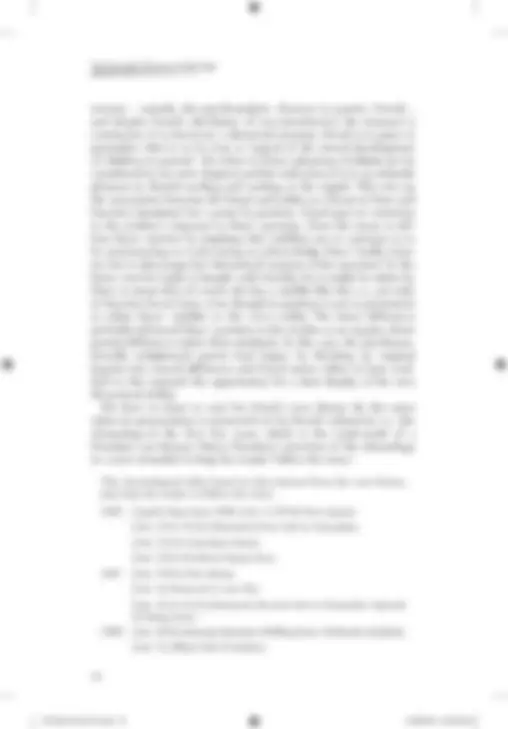
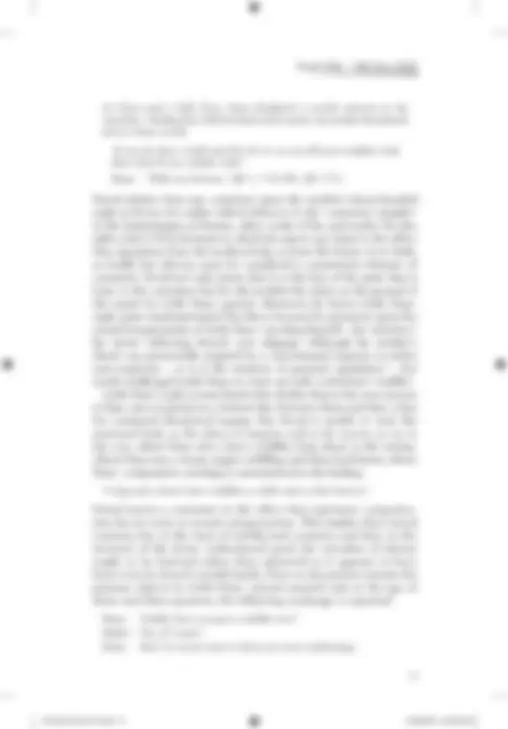
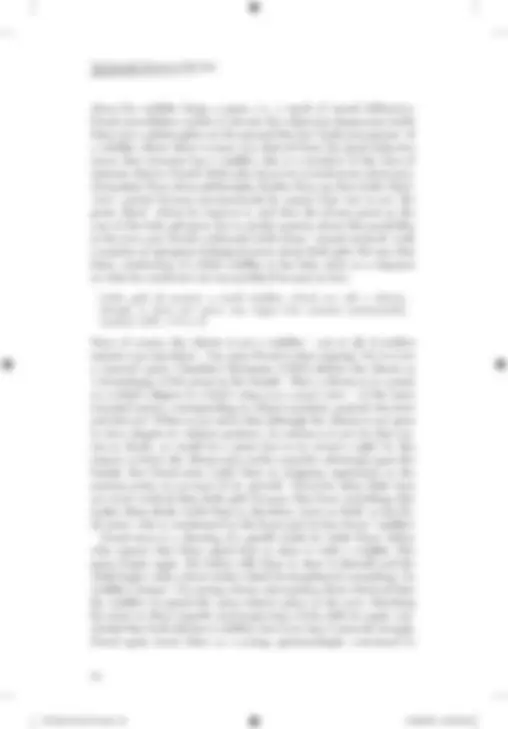
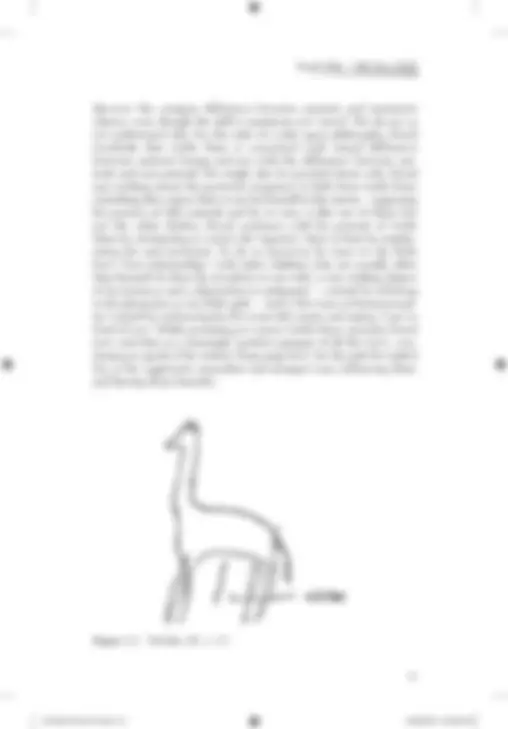
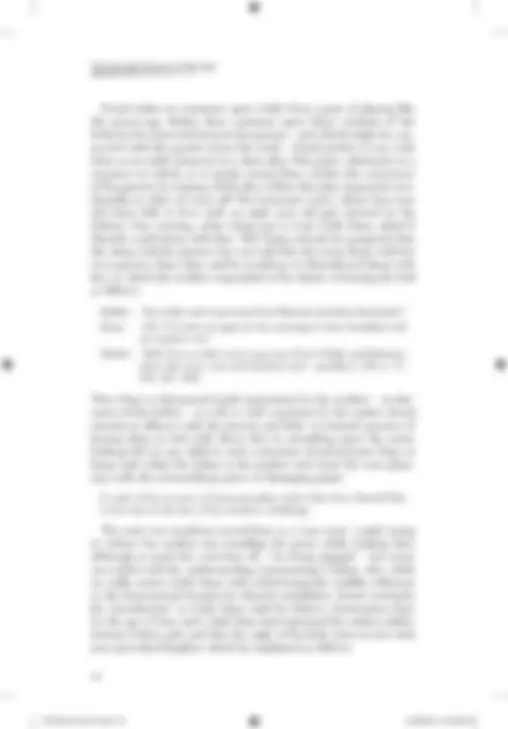
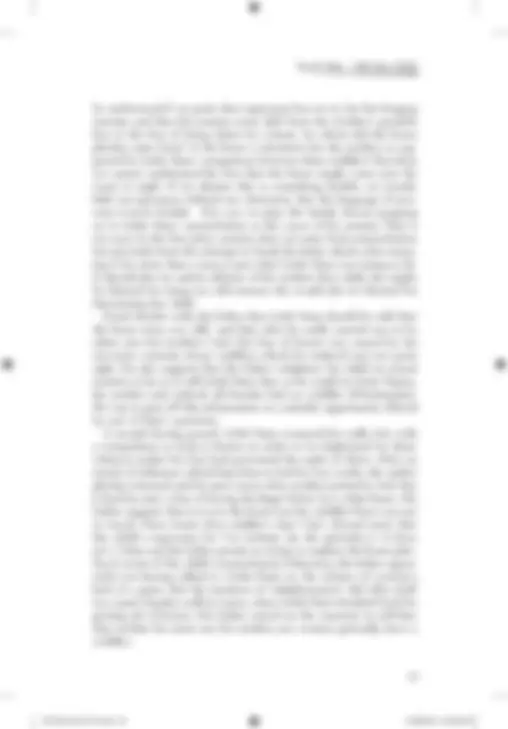
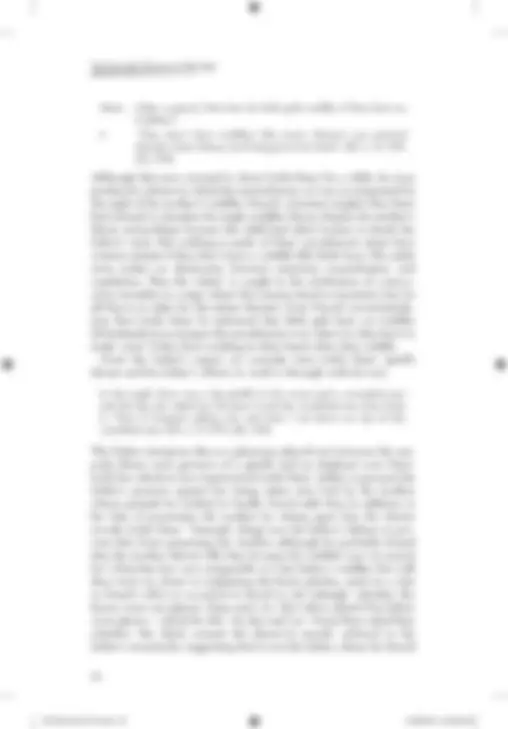
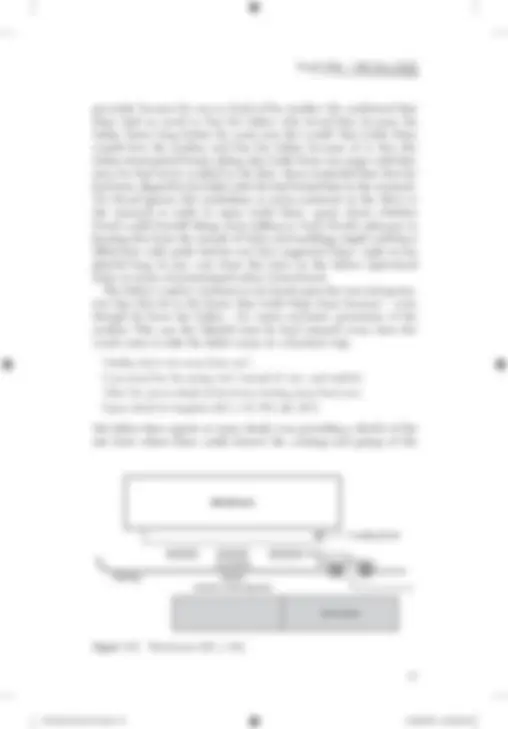
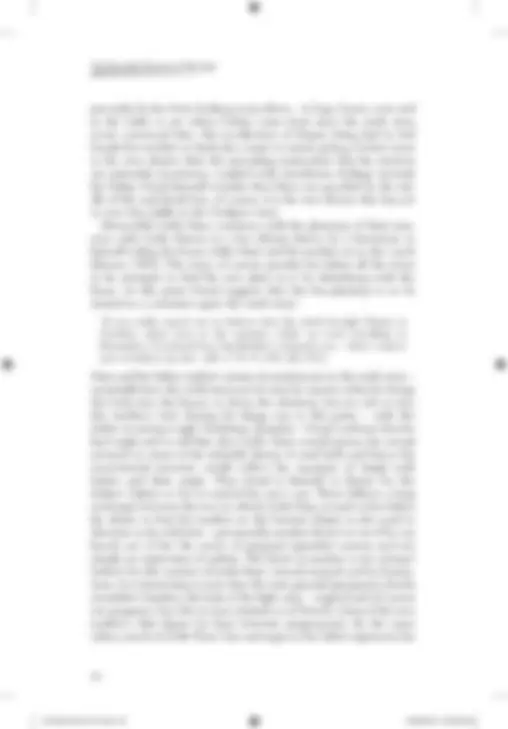
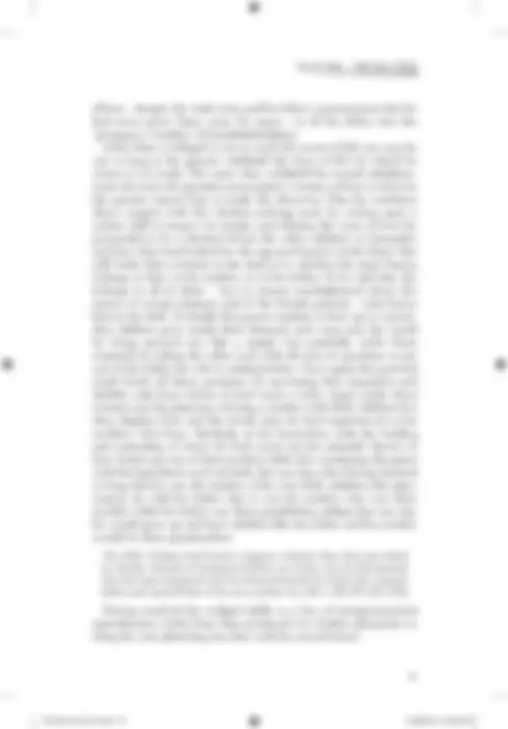
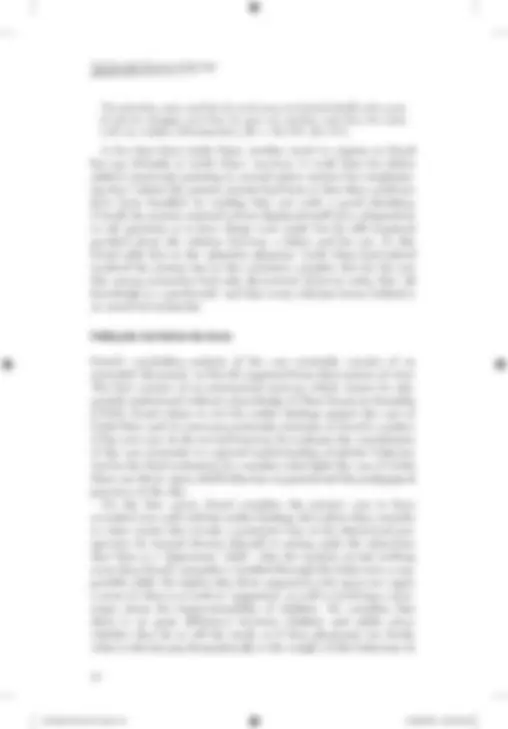
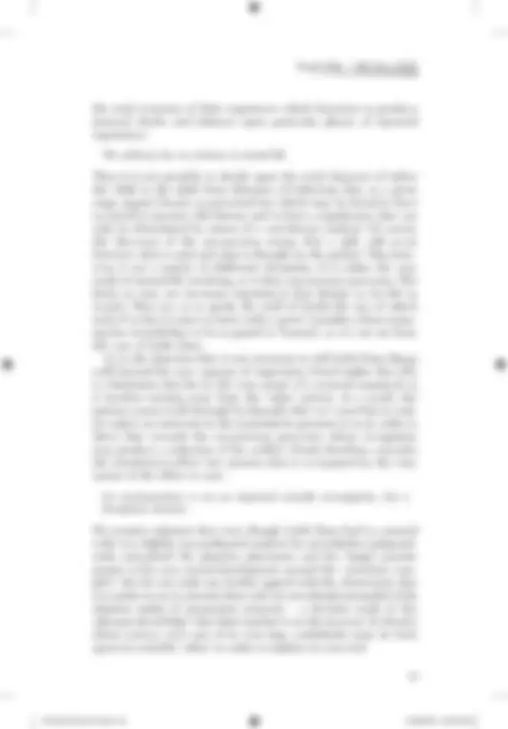
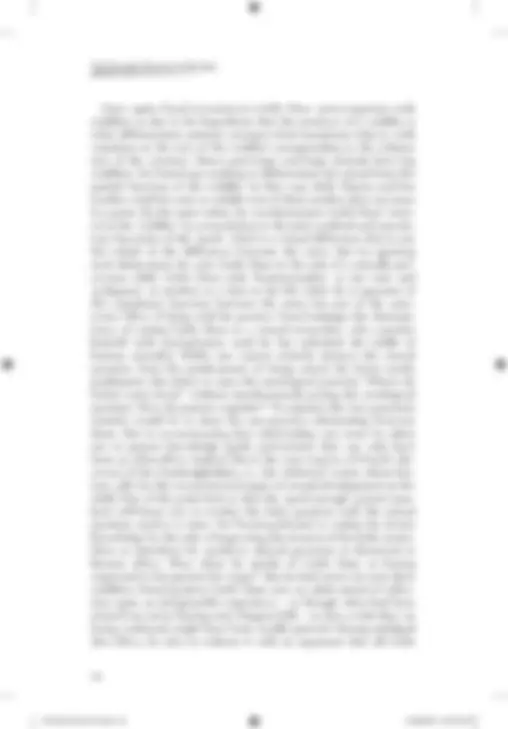
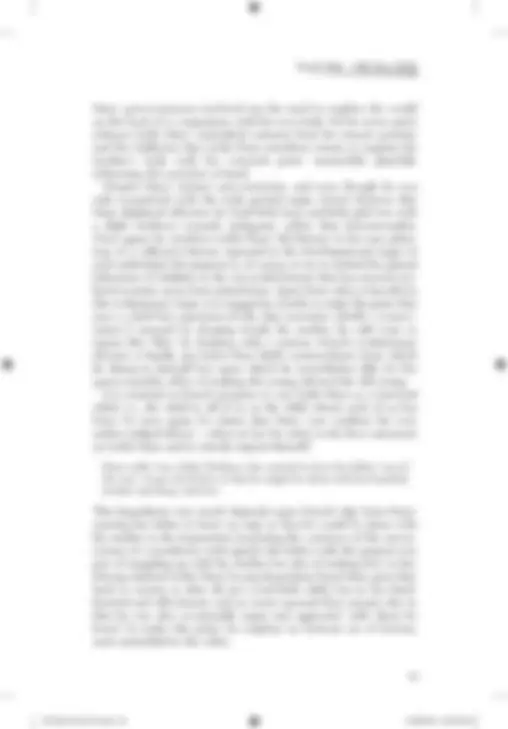
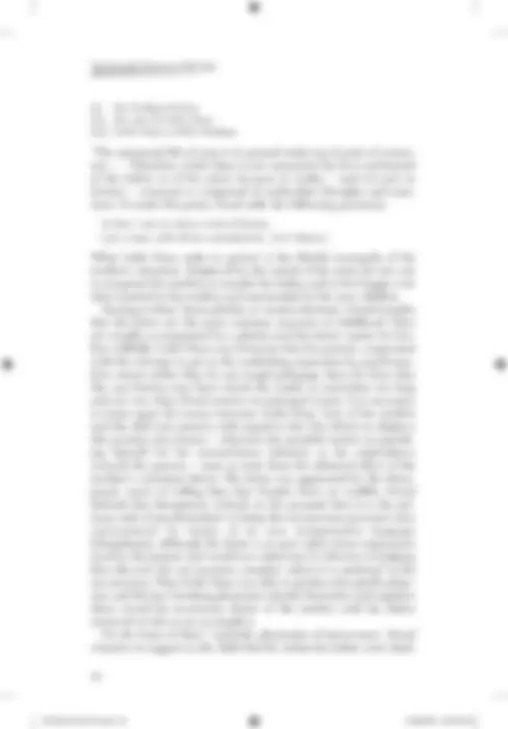
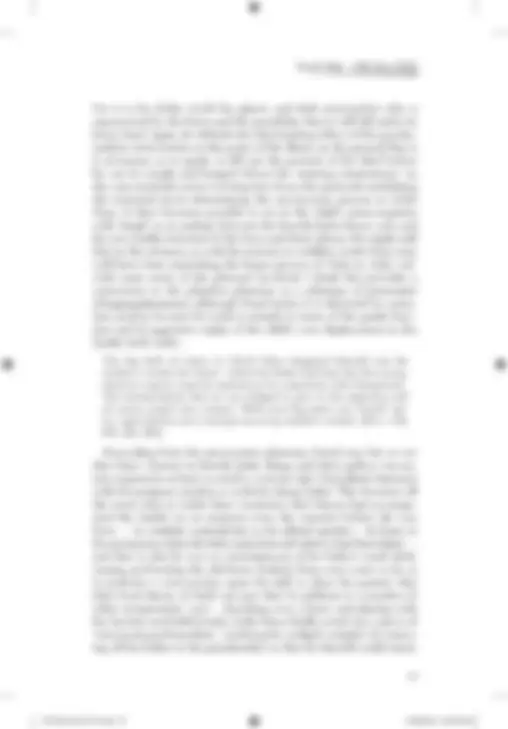
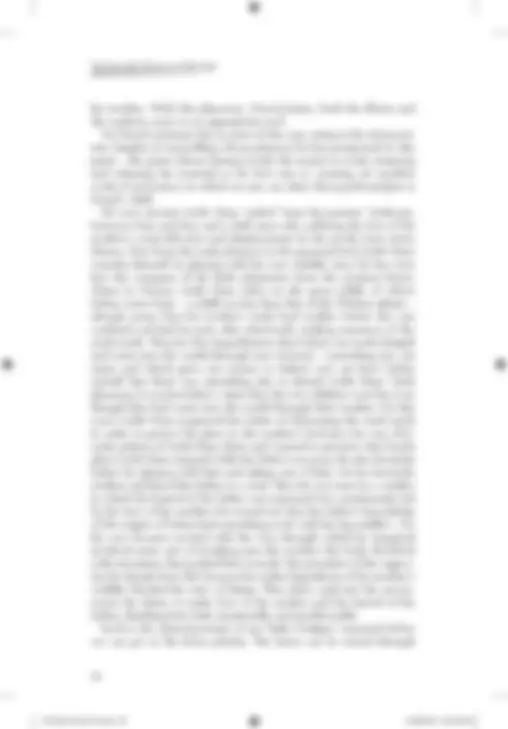
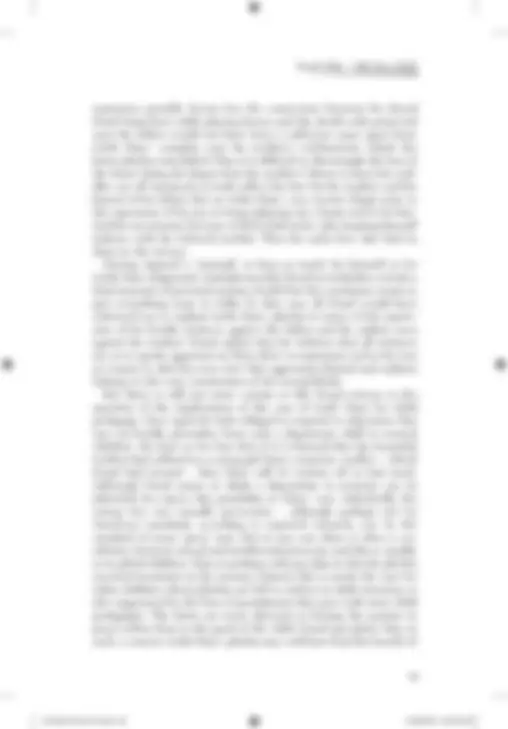
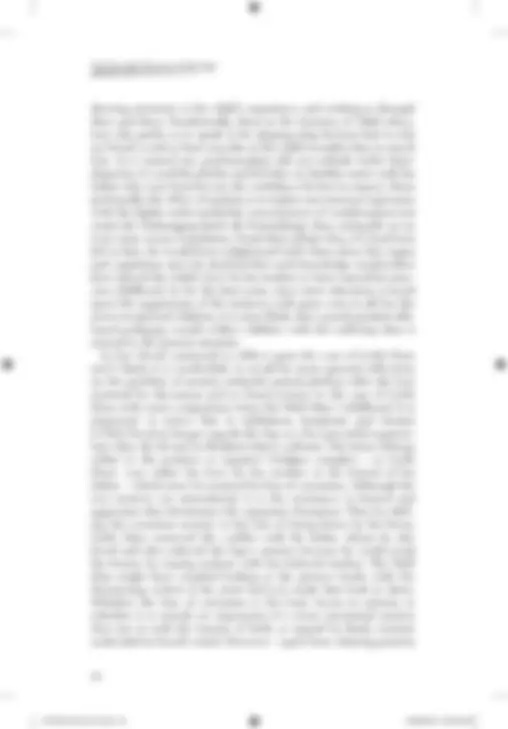
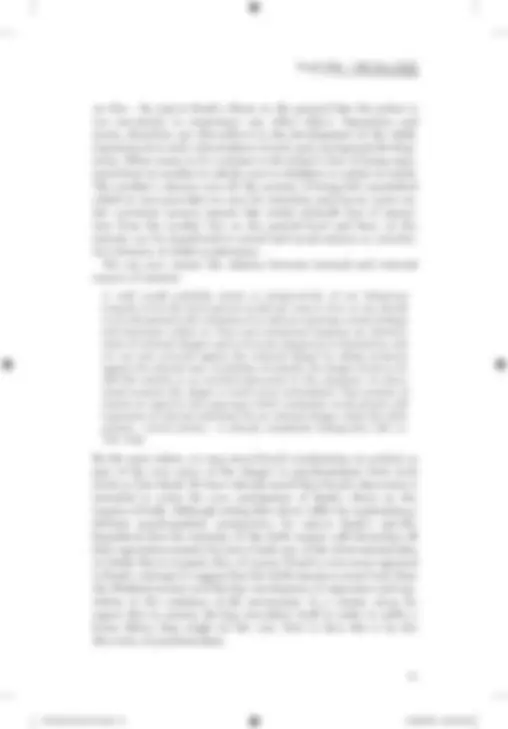
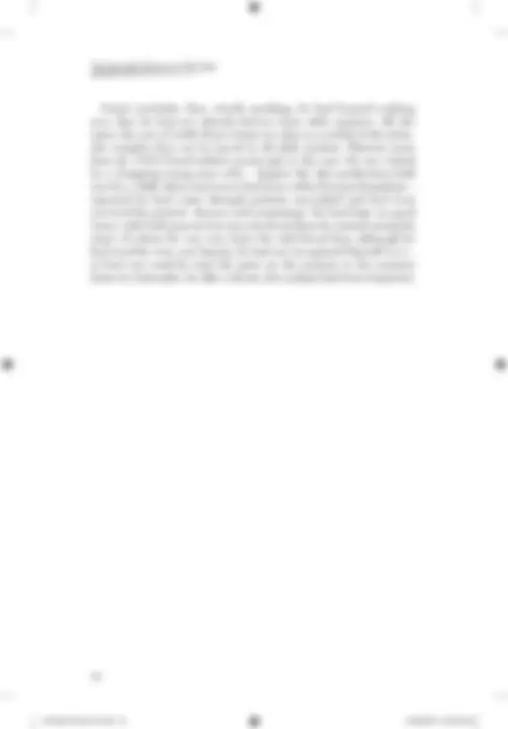


Study with the several resources on Docsity

Earn points by helping other students or get them with a premium plan


Prepare for your exams
Study with the several resources on Docsity

Earn points to download
Earn points by helping other students or get them with a premium plan
Community
Ask the community for help and clear up your study doubts
Discover the best universities in your country according to Docsity users
Free resources
Download our free guides on studying techniques, anxiety management strategies, and thesis advice from Docsity tutors
An analysis of Sigmund Freud's case study of a young boy named Little Hans, who was grappling with questions about sexual differences and the origins of babies. Freud's interpretation of Hans' behavior and fears sheds light on the psychological development of children and the role of the family in shaping their understanding of sexuality.
What you will learn
Typology: Study notes
1 / 30

This page cannot be seen from the preview
Don't miss anything!























The case of Little Hans – Analysis of a Phobia in a Five–Year–Old Boy (1909) – rejuvenates psychoanalysis. It offers the possibility of seeing in the first light of day a primal history that in the other case histo- ries can only be inferred retrospectively and perhaps appear to be restricted to abnormal types:
Surely there must be a possibility of observing in children at first hand and in all the freshness of life the sexual impulses and wishes which we dig out so laboriously in adults from among their own debris – especially as it is our own belief that they are the common property of all men, a part of the human constitution, and merely exaggerated or distorted in the case of neurotics. (SE x: 6; PFL (8): 170)
Freud speaks as though his old archaeological passion had exhausted him and as if he yearned for a renewal of his original inspiration. After long hours among the neurotics and hysterics, digging in their well protected dirt, Freud imagined that an infant analysis might open up something ‘fresh’ ( Lebensfrische ) to reveal the very ground plan of human nature in the child unfolding the ‘man’, so to speak. But of course the child is never outside of the society to which it holds the mirror. Nor do their elders wish to see themselves in the sexuality of their children. Yet Freud does not make enough of Little Hans’ parents whose adherence to psychoanalysis consti- tuted a peculiar domestic environment in which to raise Freud’s ‘fresh’ specimen. Instead, he claimed to reproduce the father’s records quite faithfully so as to preserve ‘the naiveté and direct- ness of the nursery’. Thus we enter a fiction based upon the nurs- ery as the primal construct of a fresh psychoanalysis in which human history unfolds, as if from the first light of mankind, but which in fact unfolds in Vienna at the beginning of a century that is itself Freud’s child. In his essay on The Sexual Theories of Children (1908), Freud varies the imagery for achieving a fresh perspective upon human sexuality by shifting from the side of the object to the side of the subject of research:
The Domestic Economy of the Soul
14
If we could divest ourselves of our corporeal existence, and could view the things of this earth with a fresh eye as purely thinking beings, from another planet for instance, nothing perhaps would strike our attention more forcibly than the fact of the existence of two sexes among human beings, who, though so much alike in other respects, yet mark the difference between them with such obvious external signs. (SE ix: 211–212)
Freud’s Martian phantasy assumes that other planets than our own might support science and yet not be inhabited by animate beings – or perhaps that wholly scientific beings could exist whose animate nature was not a reflexive concern and so found no expression in sexually differentiated conduct or codes of any kind. But such a community would not differ from the human community as viewed by the infant ‘visitor’ since his elders would conspire not to reveal the grounds of sexual difference despite its ubiquitous display. In short, the taboo on gender cannot fail to put itself in question as soon as anyone, so to speak, ‘turns up’ who doesn’t already know the answer. Such a one is the first-born child who is, as it were, the ques- tion that will be put sooner or later to the parents – and certainly will be, once a second baby arrives in the family. In the Martian com- munity the question of gender, however much it is erased by uni- formly technical competence and scientific ideology, always threatens to appear with the vital accidents of love and affection. The same appears to be true in the human community. Despite the parental conspiracy to maintain a uniform front vis à vis their children – expressed in their common belief in the stork – emotional cracks will appear in the parental armour. After all, they love their baby and their baby loves them. Of course, at some point the infant will dis- cover that the parents love one another – and even also love their next child – so that each elder child has always to come to terms with its emotional displacement. What is strange is that the infant has to meet this turning point in an atmosphere of lies and deception that creates the child’s first experience of mistrust (Billig, 1999). But it is mistrust in ‘hir’ own family rather than toward outsiders that sows the seed of intergenerational conflict and secrecy. It may be that this rupture in the early Eden of the family is functional for individuation. Even so, it is painful and risky since it may stifle both the intellectual and emotional growth of a child troubled by its necessary displacement in the family economy:
At the instigation of these feelings and worries, the child now comes to be occupied with the first grand problem of life and asks himself the question ‘Where do babies come from?’ – a question which, there can be
The Domestic Economy of the Soul
16
nursery – namely, the psychoanalytic observer (a parent, Freud) – and despite Freud’s disclaimer of non-interference, his murmur is continuous. It is, however, a distracted murmur. Freud is at pains to generalize what is to be seen as ‘typical of the sexual development of children in general’. He refers to Dora’s phantasy of fellatio (to be considered in our next chapter) and his reduction of it to an infantile pleasure in thumb-sucking and sucking at the nipple. This sets up the association between the breast and udder as a breast in form and function ( mamma ) but a penis by position. Freud pays no attention to the mother’s response to Hans’ question. Does she mean to dif- fuse Hans’ interest by implying that widdlers are so common as to be uninteresting or is she trying to acknowledge Hans’ bodily inter- est but to discourage his ‘theoretical’ pursuit of the question? In the latter case her reply is fraught with trouble, for it might be taken by Hans to mean that of course she has a widdler like his, i.e., not only in function but in form, even though its position is not so prominent as either Hans’ widdler or the cow’s udder. The latter difference probably informed Hans’ question to his mother as an inquiry about genital difference rather than similarity. In this case, the psychoana- lytically enlightened parent had begun by blocking an original inquiry into sexual difference and Freud seems either to have nod- ded or else enjoyed the opportunity for a later display of his own theoretical ability. We have to learn to wait for Freud’s own theory. By the same token its presentation is measured out by Freud’s odometer, i.e., the chronology of the first five years which is the trade-mark of a Freudian case history. Hence Strachey’s insertion of the chronology in a note intended to help the reader ‘follow the story’:
This chronological table, based on data derived from the case history, may help the reader to follow the story: 1903 (April) Hans born.1906 (Aet. 3–33/4) First reports. (Aet. 31/4–31/2) (Summer) First visit to Gmunden. (Aet. 31/2) Castration threat. (Aet. 3/2) October) Hanna born. 1907 (Aet. 33/4) First dream. (Aet. 4) Removal to new flat. (Aet. 41/4–41/2) (Summer) Second visit to Gmunden. Episode of biting horse. 1908 (Aet. 43/4) (January) Episode of falling horse. Outbreak of phobia. (Aet. 5) (May) End of analysis.
Freud’s Baby – Little Hans (1909)
17
At three and a half, then, Hans displayed a tactile interest in his ‘member’. Finding him with his hand on his ‘penis’, his mother threatened him in these words: ‘If you do that, I shall send for Dr. A. to cut off your widdler. And then what’ll you widdle with?’ Hans : ‘With my bottom.’ (SE x: 7–8; PFL (8): 171)
Freud refrains from any comment upon the mother’s heavy-handed reply in favour of a rather stilted reference to the ‘castration complex’ in the Interpretation of Dreams , other works of his, and myths. He also adds a late (1925) footnote in which he rejects any claim to the effect that separation from the mother-body, as from the breast or in birth, or bodily loss (feces), must be considered a constitutive element of castration. Freud not only insists that it is the loss of the penis that is basic to the castration fear he also justifies his claim on the ground of the report by Little Hans’ parents. Moreover, he leaves Little Hans’ reply quite uninterpretated. But this is because he presumes upon the sexual interpretation of Little Hans’ touching himself – his ‘member’/ his ‘penis’ reflecting Freud’s own slippage. Although his mother’s threat was presumably inspired by a conventional response to infant auto-eroticism – or is it the mimicry of parental copulation? – her words challenged Little Hans to come up with a substitute ‘widdler’. Little Hans’ reply is more kind to his mother than is her own answer to him, since it preserves a bottom line between them and thus a line for continued theoretical inquiry. But Freud is unable to treat the maternal body as the place of inquiry and so he moves us on to the zoo, where Hans sees a lion’s widdler, from there to the station, where Hans sees a steam-engine widdling, and then back home, where Hans’ comparative sexology is summarized in the finding:
‘A dog and a horse have widdlers; a table and a chair haven’t.’
Freud inserts a comment to the effect that epistemic categoriza- tion has its roots in sexual categorization. This implies that sexual curiosity lies at the basis of intellectual curiosity and that, in the interests of the latter civilizational good, the sexuality of infants ought to be fostered rather than repressed as it appears to have been even by Freud’s model family. Even so, his parents remain the primary objects in Little Hans’ sexual research and, at the age of three and three-quarters, the following exchange is reported:
Hans : ‘Daddy, have you got a widdler too?’ Father : ‘Yes, of course.’ Hans : ‘But I’ve never seen it when you were undressing.’
Freud’s Baby – Little Hans (1909)
19
taken root’ – but he shows no insight into Hans’ task of solving a prob- lem for which the parental advice is systematically misleading. Nor does Freud comment on this cognitive status of the taboo at work. Rather, we are led to focus upon Little Hans’ jealousy at the arrival of a sister. It should be noted that we cannot decide whether Hans’ responses are to displacement, i.e., the move from the first to second sibling position in the family, or, specifically, to displacement by a sis- ter whose sex makes it clear that gender is at work between his par- ents and himself. Of course, the theoretical concept of gender cannot literally be ‘seen’ from the ‘facts’ of genital difference (sex). Nor, in a sense, is it hidden by the parental discretion about undressing or by their story of the stork. Human sexuality is not ‘given’ apart from the psycho-cultural practices that interpret gender for each of the sexes. What is exquisite for Freud’s purposes is to observe how Little Hans’ sexological research delivers him into the hands of psychoa- nalysis. Hans attempts to come to terms with his little sister by deciding that she is indeed ‘little’ by swapping part of his own epo- nym and assigning to Hanna the reduced part whose actual absence constitutes ‘the difference’ between ‘Hans’ and ‘Hanna’, i.e., the masculine and the feminine forms of the ‘same’ name:
A little later Hans was watching his seven-day-old sister being given a bath. ‘But her widdler’s quite small’, he remarked; and then added, as though by way of consolation: ‘When she grows up it’ll get bigger all right.’
Here Freud has a remarkable footnote (SE x: 11 n.3: PFL (8): 175 n.2). He begins by recording similar observations by two other boys on seeing their baby sister for the first time (we have to assume that what they saw was her ‘genitals’). Freud then expostulates to the effect that ‘One might well feel horrified at such signs of the prema- ture decay of a child’s intellect’, whereas he himself regards sexual curiosity as the very origin of mental life. ‘Why was it’, he asks, ‘that these young enquirers did not report what they really saw – namely, that there was no widdler there?’ But shouldn’t we say what they were looking at was a pubis. To say that they ‘saw’ that the little girl had no ‘widdler’, meaning that she had no penis, is to identify a pos- sible query about whether she could widdle from the pubis – as, for example, Hans believed one could widdle from one’s bottom – with the possible argument that anyone without a penis cannot widdle. So far, all that Hans’ sexual research has revealed is that both his parents have widdlers, i.e., that both have something with which to make wi-wi that – since they do not disclose it – he is obliged to assume resembles his own widdler. However, this says nothing as yet
The Domestic Economy of the Soul
20
about his widdler being a penis, i.e., a mark of sexual difference. Freud nevertheless wishes to elevate the otherwise degenerate Little Hans into a philosopher on the ground that his ‘faulty perception’ of a widdler where there is none was derived from his good inductive sense, that everyone has a widdler who is a member of the class of animate objects. Freud’s little joke, however, reveals more about psy- choanalysis than about philosophy. Rather than say that Little Hans’ ‘sees’ a penis because unconsciously he cannot bear ‘not to see’ the penis ‘there’ where he expects it, and that the absent penis in the case of the baby girl gives rise to undue anxiety about this possibility in his own case, Freud confounds Little Hans’ ‘sexual research’ with a number of egregious biological errors about little girls. He says that Hans’ attribution of a little widdler to his baby sister as a response to what he could not see was justified because in fact:
Little girls do possess a small widdler, which we call a clitoris, though it does not grow any larger but remains permanently stunted. (PFL: 176 n.1)
Now, of course, the clitoris is not a widdler – not at all. It neither urinates nor ejaculates – but, pace Freud, it does engorge. Yet it is not a ‘stunted’ penis. Chambers Dictionary (1983) defines the clitoris as ‘a homologue of the penis in the female’. Thus a clitoris is to a penis as a whale’s flipper or a bird’s wing is to a man’s arm – ‘of the same essential nature, corresponding in relative position, general structure and descent’! What is not said is that although the clitoris is not open to view, despite its ‘relative position’, its existence is not for that rea- son in doubt, as would be a penis lost to its owner’s sight! In this respect, at least, the clitoris may confer a psychic advantage upon the female. But Freud joins Little Hans in assigning superiority to the anxious penis on account of its ‘growth’. However dirty, little boys are more evolved than little girls because they have something that makes them think. Little Hans is, therefore, never as ‘little’ as his ‘lit- tle sister’ who is condemned to the lesser part by her ‘lesser’ widdler! Freud turns to a drawing of a giraffe made by Little Hans’ father who reports that Hans asked him to draw it with a widdler. The game begins again. His father tells Hans to draw it himself and the child begins with a short stroke which he lengthened, remarking: ‘Its widdler’s longer’. On seeing a horse micturating, Hans observed that his widdler occupied the same relative place as his own. Watching his sister at three months and inspecting a baby doll, he again con- cluded that both did have widdlers, however tiny. Curiously enough, Freud again treats Hans as a young epistemologist concerned to
The Domestic Economy of the Soul
22
Freud makes no comment upon Little Hans’ game of playing like the grown-ups. Rather than comment upon Hans’ mimesis of the behavior he observed between his parents – and which might be con- nected with the puzzle about the stork – Freud prefers to toy with Hans as an adult character in a dirty play. This game culminates in a sequence in which, so to speak, young Hans catches the conscience of his parents by staging a little play within that play (repeated, inci- dentally, in what we may call ‘the restaurant scene’ where four year old Hans falls in love with an eight year old girl, abetted by his father). One evening, when being put to bed, Little Hans asked if Maried, could sleep with him. This being refused, he proposed that she sleep with his parents but was told that she must sleep with her own parents. Hans then said he would go to Mariedl and sleep with her, at which his mother responded to his threat of leaving his bed as follows:
Mother: ‘You really want to go away from Mummy and sleep downstairs?’ Hans: ‘Oh, I’ll come up again in the morning to have breakfast and do number one.’ Mother: ‘Well, if you really want to go away from Daddy and Mummy, then take your coat and knickers and – goodbye!’ (SE x: 17; PFL (8): 180)
Thus Hans is threatened (with separation) by his mother – in-the- name-of-the-father – as well as with castration by her earlier. Freud remains in alliance with the parents and their ‘occasional’ practice of having Hans in bed with them. But in remarking upon the erotic feelings felt by any child in such a situation, Freud pictures Hans as lying with either his father or his mother and closes his own phan- tasy with the extraordinary piece of damaging praise:
In spite of his accesses of homosexuality, Little Hans bore himself like a true man in the face of his mother’s challenge.
The next two incidents reveal Hans as a ‘true man’, vainly trying to seduce his mother into handling his penis while bathing him, although as usual she casts him off – for being ‘piggish’ – but more successful with his understanding (‘penetrating’) father, who while on walks assists Little Hans with unbuttoning his widdler oblivious to the homosexual fixation he thereby establishes. Freud concludes his ‘introduction’ to Little Hans with his father’s observations that, by the age of four and a half, Hans had repressed his earlier exhibi- tionism before girls and that the sight of his little sister in her bath now provoked laughter which he explained as follows:
Freud’s Baby – Little Hans (1909)
23
‘I am laughing at Hanna’s widdler.’ ‘Why?’ ‘Because her widdler’s so lovely’( schön ).
Freud leaves us with the father’s reflection upon this exchange:
‘Of course his answer was a disingenuous one. In reality her widdler has seemed to him funny ( komisch ). Moreover, this is the first time he has recognized in this way the distinction between male and female genitals instead of denying it.’ (SE x: 21; PFL (8): 184)
Little Hans’ father next reports a change in the child’s behavior towards the animals in the zoo at Schönbrunn. He had begun to avoid the giraffe and the elephant, as well as to fear the pelican but to love small animals. His father confronted Hans with the explana- tion that his fear of large animals was a fear of big widdlers, most likely acquired from his inspection of horses, and he summed things up by saying that it’s just a matter of big animals having big widdlers and little animals having little widdlers. To this the child replied:
Hans : ‘And everyone has a widdler. And my widdler will get bigger; it’s fixed in, of course.’ (PFL: 196).
Here Freud explains that Little Hans’ reply was not directed by his fear of widdlers. On the contrary they were a source of pleasurable interest to him, but something – yet to be explained – has altered their valence so that his sexual research had become painful to him. Freud proposes that the castration threat made by his mother when he was only three and a half had emerged as a ‘deferred effect’ ( nach- tragliche Gehorsam ), surfacing in his anxious reference to his widdler being ‘fixed in’ and reinforced by his ‘enlightenment’ about women’s lack of a widdler (a shattering experience for which Freud seems to take no responsibility, as though it were due only to the father play- ing doctor). He then pictures Little Hans having to resist the fact that it is possible to be an animal without a widdler, namely, not a man but a woman ( Weib ). Little Hans resisted this fact of life because, in view of the castration threat, it would mean that he him- self could be ‘made’ into a woman.
Case history and analysis of a phobia
Freud restarts the case history with the father’s report that Little Hans had developed a nervous disorder – a fear that a horse will bite him in the street. His immediate fear of the horse’s large penis, which Little Hans had also assigned to his mother, apparently had deeper
Freud’s Baby – Little Hans (1909)
25
be understood if we posit that repression has set in, but his longing remains and thus his anxiety must shift from the mother’s possible loss to the fear of being bitten by a horse. So where did the horse phobia come from? Is the horse a substitute for the mother as sug- gested by Little Hans’ comparison between their widdlers? But then we cannot understand his fear that the horse might come into his room at night. If we dismiss this as something foolish, we merely hide our ignorance behind our cleverness. But the language of neu- rosis is never foolish. Nor can we play the family doctor jumping on to Little Hans’ masturbation as the cause of his anxiety. That is too easy. In the first place anxiety does not arise from masturbation but precisely from the attempt to break the habit which, after enjoy- ing it for more than a year, is just what Little Hans was trying to do. It should also be said in defense of his mother that while she might be blamed for being too affectionate she would also be blamed for threatening her child. Freud decides with the father that Little Hans should be told that the horse story was ‘silly’ and that what he really wanted was to be taken into his mother’s bed. His fear of horses was caused by his excessive curiosity about widdlers which he realized was not quite right. He also suggests that the father ‘enlighten’ his child on sexual matters so far as to tell Little Hans that, as he could see from Hanna, his mother and, indeed, all females had no widdler ( Wiwimacher ). He was to pass off this information at a suitable opportunity offered by one of Hans’ questions. A month having passed, Little Hans resumed his walks but with a compulsion to look at horses in order to be frightened by them whereas earlier his fear had prevented the sight of them. After an attack of influenza which kept him in bed for two weeks, the earlier phobia returned and became worse after another period in bed. But it had become a fear of having his finger bitten by a white horse. His father suggests that it is not the horse but his widdler Hans was not to touch. Hans insists that widdler’s don’t bite. (Freud notes that the child’s expression for ‘I’m itching’ (in the genitals) is ‘it bites me’.) Hans and his father persist in trying to explain the horse pho- bia in terms of the child’s masturbatory behaviour, the father appar- ently not having talked to Little Hans on the subject of woman’s lack of a penis. But the moment of ‘enlightenment’ did offer itself on a quiet Sunday walk in Lainz, when Little Hans thanked God for getting rid of horses. His father seized on the moment to tell him that neither his sister nor his mother, nor women generally, have a widdler:
The Domestic Economy of the Soul
26
Hans: (after a pause): ‘But how do little girls widdle, if they have no widdlers?’ I : ‘They don’t have widdlers like yours. Haven’t you noticed already, when Hanna was being given her bath?’ (SE x: 31; PFL (8): 194)
Although this news seemed to cheer Little Hans for a while, he soon produced a dream in which his masturbatory act was accompanied by the sight of his mother’s widdler. Freud’s comment implies that Hans had refused to abandon his single widdler theory despite his mother’s threat and perhaps because the child had other reasons to doubt his father’s story. But nothing is made of Hans’ puzzlement about how women urinate if they don’t have a widdler like little boys. The adult story makes no distinction between urination, masturbation, and copulation. Thus the ‘infant’ is caught in the attribution of a preco- cious sexuality at a stage where the urinary ritual or mysteries may be all that is at stake for the infant theorist. Even Freud’s recommenda- tion that Little Hans be informed that little girls have no widdler ( Wiwimacher ) encourages the puzzlement over what it is they have to make ‘ wiwi ’ if they have nothing in their hand when they widdle. From the father’s report we consider next Little Hans’ giraffe dream and his father’s efforts to work it through with his son:
In the night there was a big giraffe in the room and a crumpled one; and the big one called out because I took the crumbled one away from it. Then it stopped calling out; and then I sat down on top of the crumbled one. (SE x: 37; PFL (8): 199)
The father interprets this as a phantasy played out between the ani- mals (there were pictures of a giraffe and an elephant over Hans’ bed) but which in fact represented Little Hans’ ability to get past his father’s protests against his being taken into bed by his mother whose genitals he wished to fondle. Freud adds that in addition to his idea of possessing the mother by sitting upon her, the dream reveals Little Hans’ ‘triumph’ ( Sieg ) over his father’s failure to pre- vent him from possessing his mother, although he probably feared that his mother did not like him because his widdler was ‘no match for’ (Strachey has ‘not comparable to’) his father’s widdler. But still they were no closer to explaining the horse phobia, until on a visit to Freud’s office it occurred to Freud to ask ‘jokingly’ whether the horses wore eye-glasses. Hans said, ‘no’. But when asked if his father wore glasses – which he did – he also said ‘no’. Freud then asked him whether ‘the black around the [horse’s] mouth’ referred to his father’s moustache, suggesting that it was his father whom he feared
The Domestic Economy of the Soul
28
carthorses, and he notes specifically that Hans’ fear arose with the larger carts ( Wagen ) – their starting up, their speed, and their turns to enter or exit the warehouse of the Office for the Taxation of Foodstuffs. He suggests Little Hans’ fear of the movement of the carthorse is an expression of a desire to be left alone in possession of his mother while he himself is away. With the aid of a sketch he treats Hans’ fear of the carts moving off while he was trying to jump from them on to the loading dock where he wanted to play by stacking the boxes as a ‘symbolic substitute for some other wish’ that ‘the Professor’ would likely better understand. Further questioning reveals that the carthorses most feared by Little Hans were those with a ‘black thing’ on their mouths:
Figure 1.3 Horse head (SE x: 49)
He was most afraid that the horse pulling very heavy loads would fall down, ‘making a racket ( Krawall ) with its feet’, and perhaps be dead. Freud concurred with the father in seeing behind the diffuse horse phobia a wish for the father’s death, but leaves us to wait for the significance of the fallen horse’s legs thrashing in the air. Little Hans began to play at being a horse himself and even to stamp his feet like a horse – something he had done whenever he was angry or had to do potty rather than play or when he had to widdle. So far things seem to be bogging down and Freud anticipates his reader’s boredom by claiming that this trough in the analysis will be followed by a peak that Little Hans is just about to reveal. Hans’ next episode involves his mother’s ‘drawers’ (knickers) which throw him into a fit, spitting on the floor. His father tries to match the ‘yellow’ knickers to the yellow turds ( lumpf ) in an earlier episode. But Little Hans is just as upset by ‘black’ knickers. The puzzle related to his mother allowing him to accompany her to the toilet where he enjoyed seeing her lower her knickers to make lumpf. Hans continues to identify with horses and relates some games of cart and horse with the other children in which he often played ‘horse’ and was disturbed
Freud’s Baby – Little Hans (1909)
29
by the expression ‘cos of the horse’ ( Wegen dem Pferd ) in which he heard the word ‘cos’ ( Wegen ) as ‘cart’ ( Wagen ). Freud does not per- sue the association with Magen (the stomach) yet Hans had butted his father in the stomach earlier, perhaps mimicking what he took to be his father’s way of treating his mother’s stomach to make babies. The mother and father, of course, go together like a horse and cart. The puzzle is ‘how?’ – especially if the horse goes before the cart! But Little Hans seems to sense that the cart may, after all, go prop- erly before the horse – to get its load. Returning to the inquest on his mother’s knickers, Little Hans’ behaviour, in particular his reac- tion of ‘spitting’ ( Spucken, Speien ) with its overtones of ejaculation or vomiting, remains without comment, although it reveals his mim- icry of the parental secret. Here Freud sacrifices Hans’ combination of research and acting out in favour of his own dramaturgy in which he speaks of Hans as ‘masking’ himself in the whole affair of the knickers in order to hide his pleasure with professions of disgust. In this connection, Hans offers the following explanation:
‘I spit because the black drawers are black like a lumpf and the yellow ones like a widdle, and then I think I’ve got to widdle’. (SE x: 63; PFL (8): 224)
Hans’ father persues his questioning. But this reveals little more than that Hans associated the ‘racket’ ( Krawall ) – remember the racket made by the horse’s feet and by himself stamping – of flushing the toilet with lumpf and the trickle with widdling. Freud intervenes to inform the reader that the father is getting nowhere because he asks too many questions. On the eleventh of April, Little Hans entered his parent’s room and was sent out as usual. He later reported:
‘Daddy, I thought something. I was in the bath, and then the plumber ( Schlosser ) came and unscrewed it. Then he took a big borer ( Bohrer ) and stuck it into my stomach ( Bauch )’. (SE x: 65; PFL (8): 226)
Along this line, Hans also remembered his displeasure at having to take baths sitting or lying instead of kneeling or standing. Under questioning he explains his fear that his mother might let his head go under the water but his father guesses that it is probably his sister Hanna upon whom he wished that fate. Later on, Hans expressed his fear that Hanna might fall from the balcony which had such big gaps in it – they had to be filled with wire – apparently the unpractical design of a Secessionist metal worker ( Schlosser )! His mother gets him to admit that he would rather not have a sister. It then becomes clearer that Hanna is the ‘ lumpf’ with which he is obsessed. More
Freud’s Baby – Little Hans (1909)
31
efforts – despite the stork story and his father’s protestations that he had never given Hans cause for anger – to fit his father into the ‘pregnancy complex’ ( Graviditätskomplex ). Little Hans is obliged to try to crack the secret of life any way he can so long as his parents withhold the facts of life for which he seems to be ready. The more they withhold his sexual enlighten- ment the more he parodies presumptive versions of how it must be the parents expect him to make his discovery. Thus he combines direct surgery with the chicken-and-egg story by cutting open a rubber doll to inspect its insides and relating the story of how he pretended to be a chicken before the other children at Gmunden and how they had looked for the egg and found a Little Hans! But still Little Hans remains in the dark as to whether his sister Hanna belongs to him, to his mother, or to his father. To be told that she belongs to all of them – but to remain unenlightened about the nature of sexual relations and of the female genitals – only leaves him in the dark. So finally his parents explain to him ‘up to a point’ that children grow inside their Mummy and come into the world by being pressed out ‘like a lumpf ’, but painfully. Little Hans responds by taking the other tack with all sorts of questions to get out of the father his role in making babies. Once again the parental myth fends off these questions by answering that mummies and daddies only have babies if God wants a baby. Again Little Hans retreats into his phantasy of being a mother with little children lest they displace him and the lovely time he had experienced as his mother’s first-born. Similarly, in his fascination with the loading and unloading of boxes he had acted out his infantile theory of how babies got out of their mother while also overlaying this game with his hypothesis on fecal birth. But one day, after having claimed so long that he was the mother of his own little children (his play- mates), he told his father that it was his mother who was their mother while his father was their grandfather, adding that one day he would grow up and have children like his father and his mother would be their grandmother:
The little Oedipus had found a happier solution than that prescribed by destiny. Instead of putting his father out of the way, he had granted him the same happiness that he desired himself: he made him a grand- father and married him to his own mother too. (SE x: 98; PFL (8): 256) Having resolved the oedipal riddle as a law of intergenerational reproduction, Little Hans then produced two further phantasies to bring his own plumbing into line with his sexual future:
The Domestic Economy of the Soul
32
The plumber came; and first he took away my behind ( Podl ) with a pair of pincers ( Zange ), and then he gave me another, and then the same with my widdler ( Wiwimacher ). (SE x: 98; PFL (8): 257) A few days later, Little Hans’ mother wrote to express to Freud her joy ( Freude ) at Little Hans’ recovery. A week later his father added a postscript pointing to several minor matters but emphasiz- ing how violent the anxiety attacks had been so that they could not have been handled by sending him out with a good thrashing. Overall, his anxiety seemed to have displaced itself into a disposition to ask questions as to how things were made but he still remained puzzled about the relation between a father and his son. To this Freud adds that in the ‘plumber phantasy’ Little Hans had indeed resolved the anxiety due to the castration complex. But for the rest this young researcher had only discovered, however early, that ‘all knowledge is a patchwork’ and that every solution leaves behind it an unsolved remainder.
Putting the Cart Before the Horse
Freud’s concluding analysis of the case materials consists of an extended ‘discussion’ in Part III organized from three points of view. The first consists of an intertextual exercise which cannot be ade- quately understood without a knowledge of Three Essays on Sexuality (1905). Freud claims to test his earlier findings against the case of Little Hans and we must pay particular attention to Freud’s conduct of his own case. In the second exercise, he evaluates the contribution of the case materials to a general understanding of phobic behavior. And in the final evaluation, he considers what light the case of Little Hans can throw upon child behaviour in general and the pedagogical practices of the day. On the first count, Freud considers the present case to have accorded very well with his earlier findings. But rather than consider to what extent this reveals a persistent bias in his theoretical per- spective, he instead devotes himself to setting aside the objections that Hans is a ‘degenerate’ child – that the analysis reveals nothing more than Freud’s ‘prejudices’ instilled through the father into a sug- gestible child. He replies that these arguments rely upon too vague a sense of what is at work in ‘suggestion’ as well as involving a stere- otype about the impressionability of children. He considers that there is no great difference between children and adults since, whether they lie or tell the truth, or if they phantasise too freely, what is relevant psychoanalytically is the weight of this behaviour in